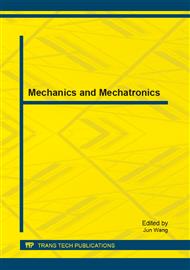p.866
p.872
p.877
p.883
p.889
p.895
p.905
p.910
p.918
Thermal Analysis of Expressway Considering Wind Effect
Abstract:
This paper reports a method of thermal analysis of expressway and the results of analysis of four expressways currently used in Japan. The authors built a mathematical model based on the principle of thermal conduction. For the boundary conditions in this mathematical model the influence of solar radiation, wind and air temperature etc. are taken into consideration. Explicit finite difference method is used in the analysis. The authors made an analysis program in Fortran language. Four main expressways distributing from the northern to the southern in Japan are chosen as the objects of this study. The observed weather data of the hottest days experienced by these expressways during the past 30 years is input into the computer calculation. The basic mechanism of expressway temperature change and effect factors are illuminated. The results are reported and discussed.
Info:
Periodical:
Pages:
895-904
Citation:
Online since:
October 2013
Authors:
Price:
Сopyright:
© 2013 Trans Tech Publications Ltd. All Rights Reserved
Share:
Citation:


